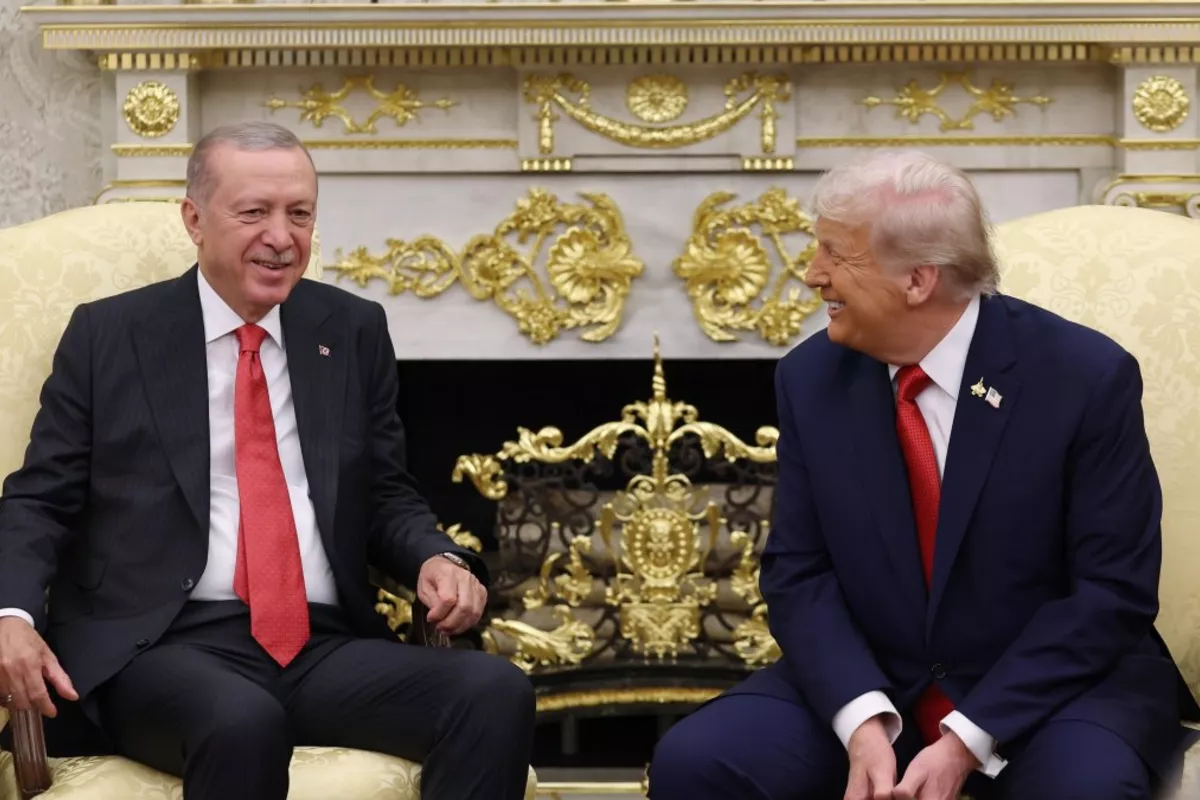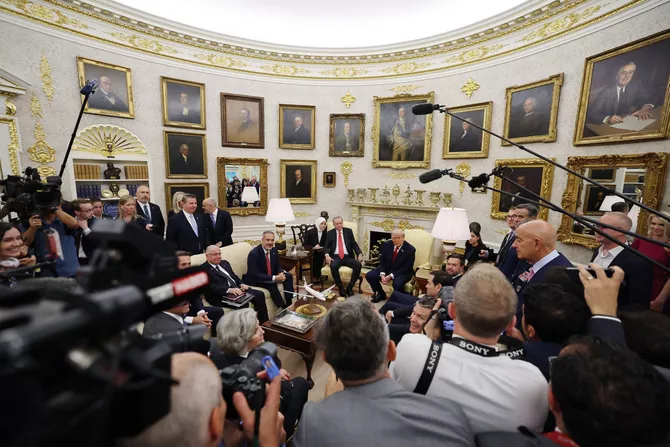
AA Photo
President Recep Tayyip Erdoğan's meeting with U.S. President Donald Trump in September 2025 was not just a bilateral encounter between two leaders but a diplomatic turning point that could reshape the trajectory of Türkiye-U.S. relations.
As is well known, the relationship between the two countries has historically been marked by fluctuations. During Trump’s presidency from 2017 to 2021, Erdoğan and Trump met twice, whereas under former U.S. President Joe Biden, relations had frozen. Today, however, both sides are making efforts to rebuild ties, as if they had never been broken. Yet, Türkiye is no longer in the same position it was six years ago, The Caspian Post reports citing Turkish media.
Systemic transformations, changing regional balances and particularly strategic advances in the defense industry have elevated Türkiye to the status of a rising power not only regionally but also globally. In this regard, bilateral relations should no longer be read solely within the framework of traditional alliance but also through the lens of Türkiye’s growing autonomy and multidimensional foreign policy approach.
Türkiye’s purchase of the S-400 air defense system from Russia and the subsequent imposition of Countering America's Adversaries Through Sanctions Act (CAATSA) became a turning point in bilateral relations. Despite Türkiye’s $1.4 billion payment, its removal from the F-35 program created a profound crisis of trust between the parties. On the other hand, the U.S. military support for the YPG, the Syrian offshoot of the PKK terrorist organization, under the umbrella of the SDF, has been one of the sharpest points of crisis in Turkish-American relations. Ankara perceives this as a direct threat to its national security and, since 2016, has sought to take the initiative on the ground through operations such as Euphrates Shield and Peace Spring.
Considering recent developments, it is clear that compulsory cooperation throughout the Syrian revolution that overthrew the Assad regime has played a significant role in strengthening bilateral relations and restoring regional stability. In Trump’s second term, his decision to sit at the negotiating table with Erdoğan once again signifies a renewed attempt to address and renegotiate these contentious issues. Moreover, following Trump’s meeting with Erdoğan, Trump’s messages in his talks with Syrian interim President Ahmed al-Sharaa about lifting sanctions drew particular attention.
The relationship between Trump and Erdoğan extends beyond symbolic conventions, characterized by a focus on enhancing bilateral cooperation and addressing existing challenges. Direct interactions between the two leaders have, at times, transcended institutional processes, contributing to the establishment of mutual trust and the advancement of strategic partnership in tangible areas. This approach has given rise to a form of “leader-to-leader diplomacy,” aiming to maintain open dialogue channels and strengthen cooperation based on shared interests in Türkiye-U.S. relations. Nevertheless, what, then, actually took place during the bilateral meeting?

With Trump’s influence in international politics, personal ties between leaders are becoming decisive in conflict resolution, particularly where institutions remain limited. Within Erdoğan and Trump's relationship, personal rapport and informal gestures play a central role in shaping bilateral ties. Unlike traditional institutional diplomacy, this approach emphasizes trust built on direct leader-to-leader interactions. One of the most striking aspects of the Erdoğan-Trump meeting was the set of symbolic messages conveyed through carefully chosen details - from Trump’s F-35 pin to Erdoğan’s accommodation at Blair House - which reinforced mutual recognition and respect.
Blair House, the official state guesthouse located across from the White House, is reserved exclusively for the most distinguished visitors. From the very beginning, it was evident that Trump’s approach to Erdoğan was based on equality and respect. Erdoğan’s stay at Blair House is a special protocol message at the state level; it is a demonstration of the diplomatic status granted to Türkiye. This became evident at the start of the talks. Unlike the positions of leaders such as Ukrainian President Volodymyr Zelenskyy or certain European counterparts, who were previously received in the Oval Office, a political ground emerged that was mainly shaped by the bilateral relationship between Trump and Erdoğan.
For the first time in the Oval Office, Trump pinned a badge next to the U.S. flag on his jacket, an aircraft, or possibly an F-35. This choice was not merely a protocol detail, but rather a diplomatic symbol directly referring to the issue most prominent on Türkiye’s agenda: the prospect of returning to the F-35 program. At the same time, the presence of a Boeing model on the table signalled that the bilateral discussions would not be confined to political and military matters alone but would also highlight the economic and trade dimensions of the relationship.
Share on social media